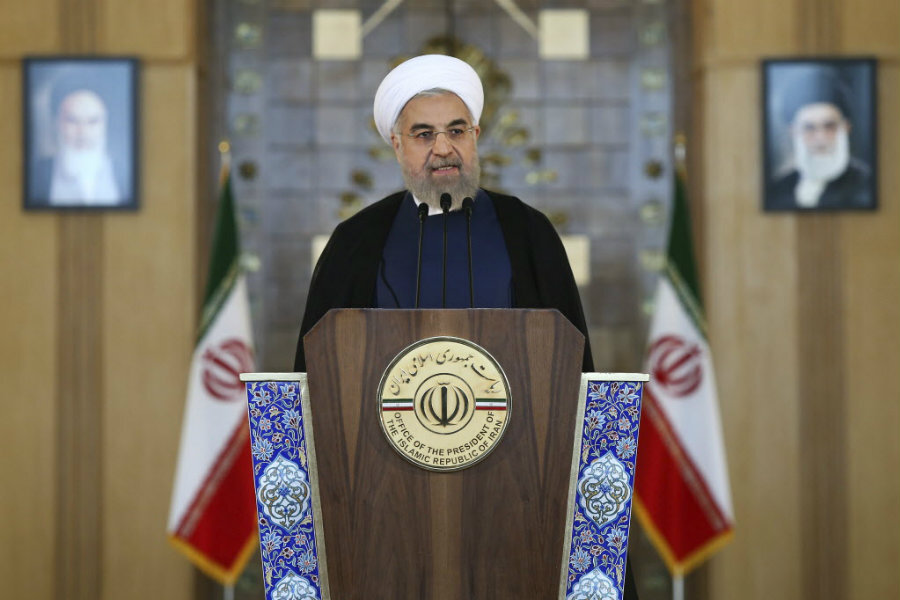Iran nuclear deal: Why it could mean cheaper gas
Loading...
Iran and six world powers, including the United States, reached a historic agreement Tuesday that, in exchange for curbs to its nuclear program, would clear the way for Tehran to access world markets after years of crippling sanctions.
The deal could have major repercussions for oil prices and the global energy industry as investors prepare for an influx of oil from Iran, the world’s fourth-largest holder of crude reserves. While some analysts say it could take months before Iran can reach its full export capacity, even a modest initial hike in supply could pull international oil prices – already down by around 40 percent from a year ago – down even further.
An extended slide in global oil prices would be more good news for drivers already benefitting from a well-supplied oil market. The cost of crude oil, which is refined to make gasoline, accounts for about half of the cost of a gallon of gasoline in the US, according to the US Energy Information Administration. Weak oil prices are why EIA expects the average retail price for US gasoline this summer to be $2.67 per gallon, the lowest price in real dollars since 2009.
Shortly after Tuesday's agreement was signed, crude prices fell by as much as 2 percent, with US oil dropping to $50.98 a barrel – though they rebounded slightly to $52.31 as investors weighed how the deal would be received by Congress, CNNMoney reported.
“The prospect of [sanctions] being lifted is creating great excitement ... as foreign trade and investment will allow Iran to make huge efficiencies and drive down the cost of production,” Sarosh Zaiwalla, a London-based sanctions lawyer told NBC News.
As part of efforts to discourage Tehran from pursuing its nuclear goals, the US and the European Union in 2012 imposed strict economic sanctions on Iran, including a ban on trade with Iran’s oil and gas sector and the Iranian government, and a blacklist on Iran’s shipping sector. US Treasury Secretary Jack Lew estimates the measures have cost Iran $160 billion in oil revenue in the last three years, as reported by Reuters.
Tuesday’s agreement means that Iran may soon be back in the game. The Persian Gulf state has 20 million barrels in stored oil and could export up to 400,000 barrels a day once the sanctions are lifted, Bijan Khajehpour, an Iranian economist and managing partner of Vienna-based consulting firm Atieh International, told Bloomberg in June.
Even without Iran, the oil market is already “massively oversupplied,” the International Energy Agency noted in its latest report. Iran’s involvement in the market could mean that “the bottom of the market may still be ahead,” according to the agency.
Still, it could easily take six months before anyone sees any lasting impact from Tuesday’s deal, according to Richard Nephew, program director for economic statecraft, sanctions and energy markets at the Center on Global Energy Policy.
One reason, Mr. Nephew wrote in an analysis, is the “extensive procedure” for gaining the support of home legislative bodies: In the US, a skeptical Congress will have to receive the text of the deal, hold hearings, and decide what to do. Then there are challenges facing Iran in terms of implementing the scaledown to its nuclear program.
“Iran’s nuclear list is long,” according to Nephew. “[A]ll of this work will not even start until after 90 days from today (the end of October) and it will take months from that point to fully execute the remaining changes to Iran’s nuclear program.”
He added: “Markets should be wary of overly optimistic estimates of Iranian oil production. And international energy companies, eager to invest in Iran’s formidable reserves, should perhaps be the most cautious.”






